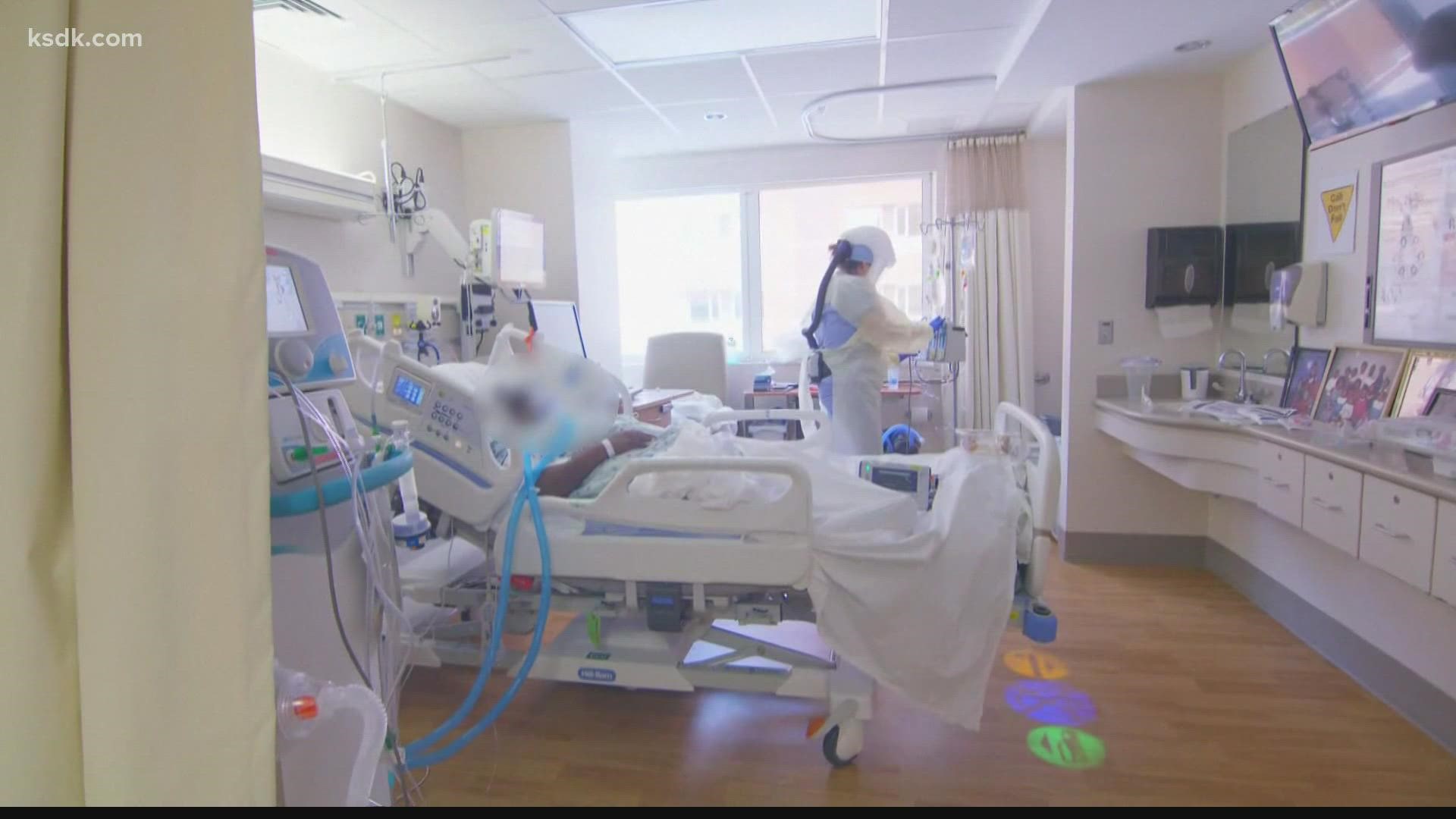ST. LOUIS — The leader of the St. Louis Metropolitan Pandemic Task Force echoed the advice of other health leaders when it comes to the new omicron variant: get vaccinated and get a booster dose.
Dr. Clay Dunagan with the St. Louis Metropolitan Pandemic Task Force said there are still many unknowns about the new variant, but he said there is reason to believe vaccinations will reduce the severity of symptoms from the omicron variant.
"While we don't yet know whether vaccines are fully protective against omicron, there is a lot of evidence and good reason to believe that vaccines will protect against serious disease, particularly those that have received booster doses," Dr. Dunagan said.
In addition to getting vaccinated, Dr. Dunagan said precautions used in previous stages of the pandemic are the best bet to limit the spread of all the COVID-19 variants.
"There is good reason to believe that the measures that we have taken to protect against delta and previous variants will be effective against omicron," he said. "Masking and social distancing continue to be effective.
"We've seen that areas with higher masking rates tend to have lower infection rates, and we know that, at the beginning, we had a substantial reduction in the impact on St. Louis from public health actions of that type."
Another thing that has the task force's attention is increasing cases in the St. Louis area. Dr. Dunagan said reporting delays due to the Thanksgiving holiday likely makes the numbers reported in the last week artificially low. Despite that, the number of newly reported cases increased 12.3% in the last two weeks when compared to the previous two weeks.
Dr. Dunagan said he expects the numbers to catch up in the next few days, as they did over the same time period in 2020.
He said the recent increase is likely due to more people gathering indoors as the weather gets colder and things like mask fatigue.
Another factor, Dr. Dunagan said, is waning immunity for people who were vaccinated or tested positive for the virus in recent months.
"[Waning immunity] may be adding some to the surge that we're seeing," Dr. Dunagan said, "but right now, I would say that the dominant impact for the surge is likely crowding indoors and people forgoing masks and social distancing."
Unvaccinated patients still make up about 75% of the total COVID patients in area hospitals, and Dr. Dunagan said that the unvaccinated group is made up of all age groups. Dr. Dunagan said the vast majority of the vaccinated COVID-19 patients are older or have something that affects their immune system.
While case numbers can be skewed by inconsistent reporting data, Dr. Dunagan said the task force's hospital data is much more consistent and is starting to trend up much more quickly than before.
In the most recent task force briefing on Nov. 16, Dr. Dunagan said cases in the region were on the increase, but hospitalizations were not going up as quickly. Now, he said that appeared to be due to the lagging nature of hospitalizations, and hospitalizations are trending much closer to case numbers.
"Currently we have 364 [COVID-positive] people in task force hospitals with a seven-day moving average of 340, and that's increasing," Dr. Dunagan said. "So we are absolutely going in the wrong direction in terms of hitting health system resources to take care of COVID patients."
Dr. Dunagan said the task force will provide briefings every other week, and a familiar face will be returning to the briefings. Dr. Alex Garza returned from his deployment and will resume some leadership duties with the task force.
"It's really great to have Dr. Garza back, and going forward, he and I will be sharing responsibilities for pandemic task force meetings and communications," Dr. Dunagan said.
Data from the task force Tuesday is as follows:
- New hospital admissions (data lagged two days) decreased – from 52 Monday to 40 Tuesday.
- The seven-day moving average of hospital admissions (data lagged two days) remained the same at 48 Tuesday.
- The seven-day moving average of hospitalizations increased – from 331 Monday to 340 Tuesday.
- Inpatient confirmed COVID-positive hospitalizations decreased – from 374 Monday to 364 Tuesday.
- Inpatient suspected COVID-positive hospitalizations increased - from 25 Monday to 30 Tuesday.
- The number of confirmed COVID-positive patients in the ICU decreased – from 82 Monday 79 Tuesday.
- The number of confirmed COVID-positive patients on ventilators decreased – from 52 Monday to 51 Tuesday.
- 6 COVID deaths were reported Monday.
- The seven-day moving average of COVID deaths increased from 5 Monday to 6 Tuesday.
- Across the system hospitals, 57 patients were discharged Monday bringing the cumulative number of COVID-19 patients discharged to 30,743.
- Of the 346 hospitalized COVID patients in the three reporting Task Force hospital systems Tuesday – 85 are fully vaccinated. That’s 25% of the patient population.
- There are 4 COVID-positive children who are 0-11 years of age in Task Force hospitals.
- There are 5 COVID-positive children who are 12-18 years of age in Task Force hospitals.
- There are 0 COVID-positive children who are 0-11 years of age and in the ICU.
- There are 0 COVID-positive children who are 12-18 years of age and in the ICU.
- Tuesday’s staffed bed hospital capacity is at 86% an average across our task force hospitals. The ICUs are at 79% of their total staffed bed capacity.

